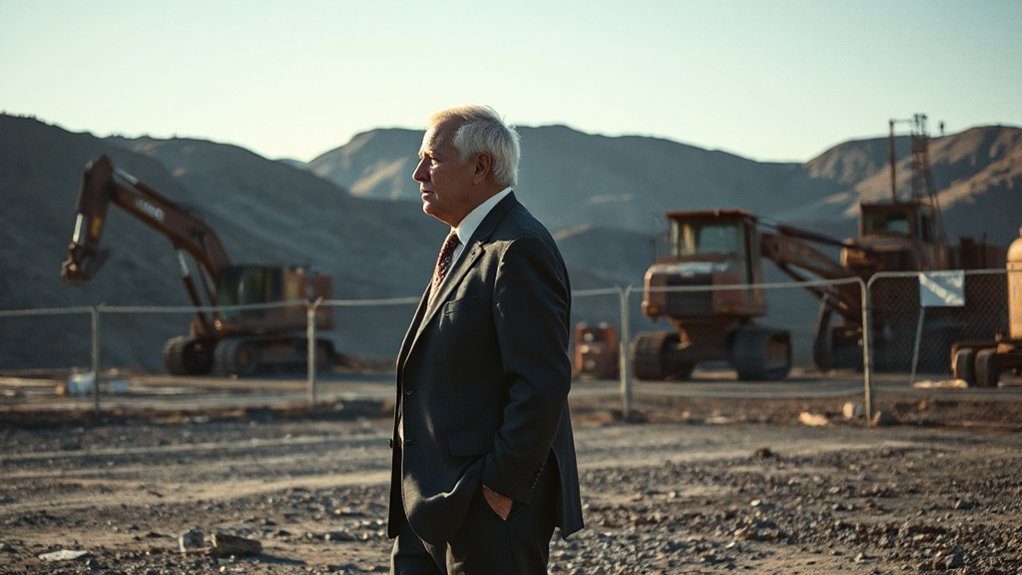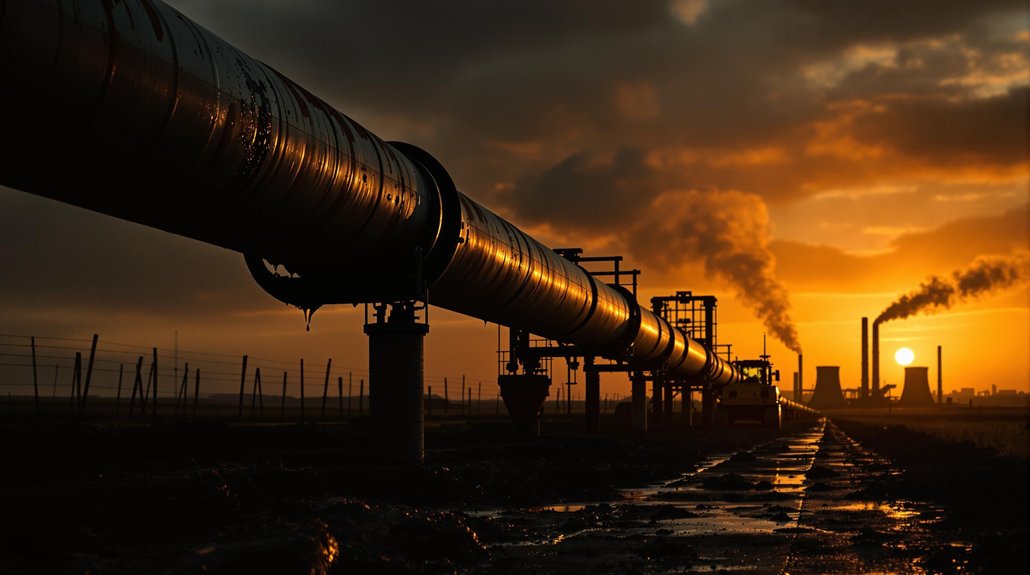While governments worldwide rush to implement ESG regulations, the mining industry finds itself drowning in a sea of bureaucratic madness. Former mining executive turned critic Jonathan Hargrove didn’t mince words at last week’s industry forum, calling the current regulatory landscape “utterly disheartening” and a “bureaucratic nightmare that would make Kafka weep.” His rare public condemnation has sparked fierce debate about the sustainability of current regulatory approaches.
The numbers don’t lie. With the EU’s alphabet soup of regulations—CSDDD, CSRD, and CRMA—all hitting around 2025, mining operators are scrambling to make sense of overlapping requirements. Meanwhile, some bright sparks thought consolidating mining standards was the answer. Great idea! Except critics worry it’ll just water everything down.
The EU’s regulatory avalanche leaves miners gasping for air while bureaucrats pat themselves on the back for another standardization victory.
“It’s a joke,” Hargrove stated bluntly. “We have strict rules on paper but pathetic enforcement. Governments talk tough then look the other way when violations occur.” This enforcement gap has fueled growing cynicism among industry insiders, who point to multinational companies backtracking on sustainability goals without consequences. The expected rise in resource nationalism is further complicating regulatory compliance, especially in frontier and emerging markets where government expectations are rapidly shifting.
The financial impact is brutal. Project timelines are stretching like taffy, with regulatory hurdles adding years to development schedules. Capital requirements have skyrocketed. Investors are getting spooked. No wonder the energy conversion is moving at a snail’s pace. A recent study revealed that 87% of executives underestimate their companies’ cybersecurity vulnerabilities, exacerbating the industry’s preparedness issues.
Perhaps most alarming is what regulators are missing entirely. Cybersecurity threats to mining operations have surged a whopping 240% this year alone. Yet this existential threat barely registers in the regulatory chaos. These regulatory failures compound existing environmental health crises, as PM2.5 particles from mining operations contribute significantly to the 8.1 million global deaths from air pollution annually.
“We’re stuck in a system where compliance is becoming more important than actual progress,” Hargrove lamented. The unpredictability of sudden policy changes and tariffs has created a perfect storm of uncertainty. Mining executives now spend more time with lawyers than engineers.
Industry experts warn that without a more coherent, stable regulatory framework, critical minerals essential for green technologies will face continued supply constraints. The irony? Regulations designed to improve sustainability might actually be its biggest obstacle.
References
- https://www.controlrisks.com/our-thinking/insights/ten-global-issues-to-shape-mining-and-metals-markets-in-2025
- https://www.corpcloud.com.au/mining-cybersecurity/
- https://www.ey.com/en_gl/insights/energy-resources/risks-opportunities
- https://discoveryalert.com.au/news/tariff-announcement-market-reaction-2025/
- https://cmicglobal.com/resources/article/new-developments-in-the-mining-industry-in-2025
- https://www.pwc.com/gx/en/industries/energy-utilities-resources/publications/mine.html
- https://farmonaut.com/mining/the-gold-mine-in-the-world-2025-gold-rush-innovations
- https://www.whitecase.com/insight-our-thinking/mining-metals-2025-poised-chessboard-geopolitics
- https://www.vaneck.com/us/en/blogs/gold-investing/ima-casanova-market-chaos-ignites-golds-surge-are-you-in/gold-monthly-commentary-january-2024.pdf








